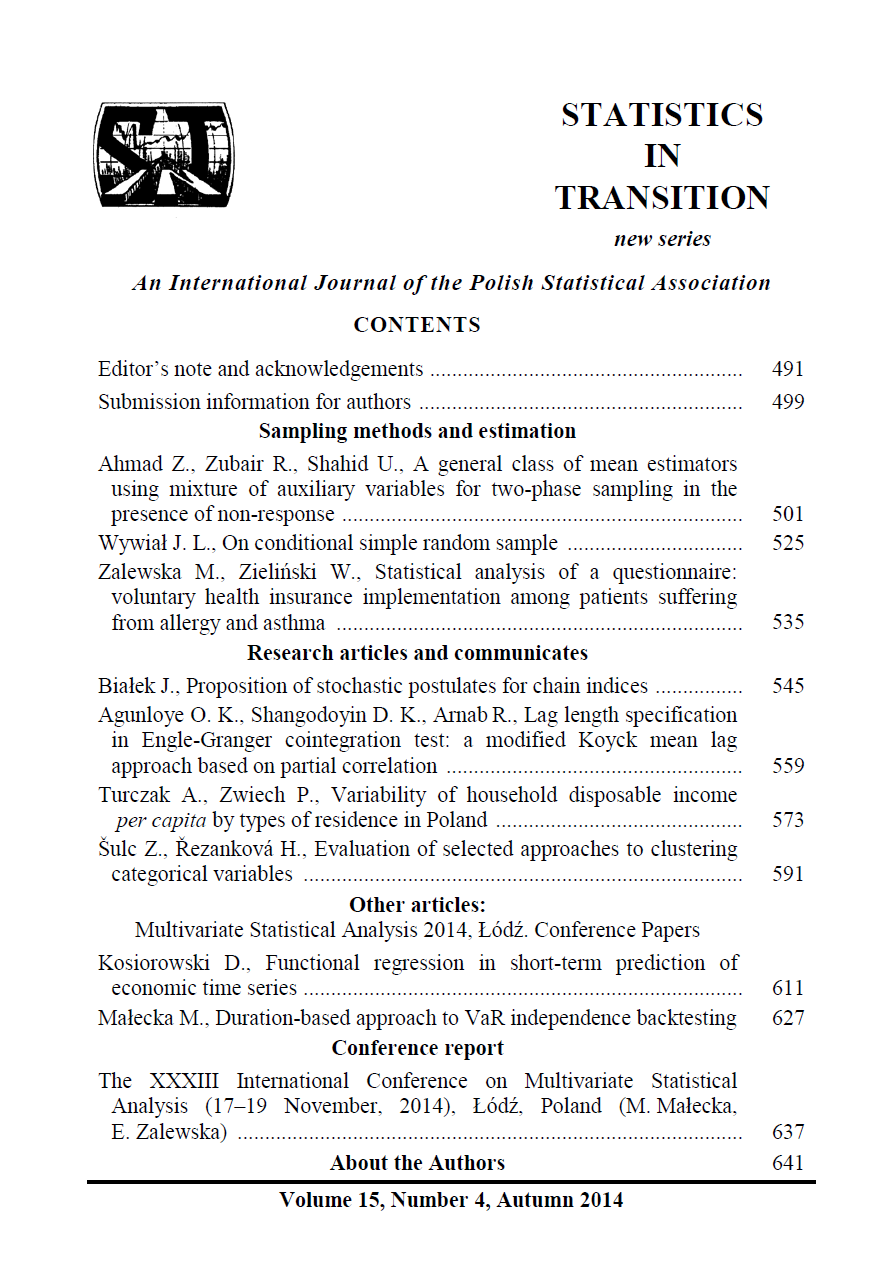ARTICLE
ABSTRACT
We consider statistical analysis of multiple answers in a questionnaire. We propose a new method of calculating simultaneous confidence regions. In a communication presented at the European Academy of Allergy and Clinical Immunology the authors (Borowicz et al. (2009)) reported the proportions of respondents which gave one of three possible exclusive answers in a questionnaire concerning the role of voluntary health insurance. There were three possible answers. Apart from percentages of answers confidence intervals of every single answer have been reported. Unfortunately inference about the population based on such intervals may lead to imprecise conclusions. The inference about the respective population suffering from allergy and asthma proportions requires the construction of two-dimensional confidence region. We propose the use of a simultaneous confidence intervals to inference about true population proportions. Most of our attention is given to the case of three possible answers but the results may be generalized to any questionnaire with more than two excluding answers.
KEYWORDS
confidence region, health insurance, multiple responses, questionnaire
REFERENCES
BISZOF, A., MEJZA, S., (2004). Jednoczesne przedziały ufności dla praw dopodobieństwa w rozkładzie wielomianowym, Colloquium Biometryczne,34, 77-84.
BLAND, M., (2000). An introduction to medical statistics, Oxford University Press, Third edition.
BOROWICZ, J., SAMOLIŃSKI, B., FURMAŃCZYK, K., WALKIEWICZ,A., LUSAWA, A., MARSZAŁKOWSKA, J. et al., (2009). Attitudes to wards the idea of voluntary health insurance implementation among pa tients suffering from allergy and asthma. Allergy 64 (Suppl. 90): 435 (abs tract 1140)
CORREA, J. C., (2001). Interval Estimation of the Parameters of the Multi nomial Distribution, ip.statjournals.net:2002/InterStat/ARTICLES/2001/articles/O01001.pdf.
FITZPATRICK, S., SCOTT, A., (1987). Quick simultaneous confidence in tervals for multinomial proportions, Journal of the American Statistical Association, 82, 875-878.
GOODMAN, L. A., (1965). On simultaneous confidence intervals for multi nomial proportions, Technometrics, 7, 247-254.
GREENWOOD, D. E., NIKULIN, M. S., (1996). A guide to chi-squared te sting, Willey.
HARTON, A., ZIELIŃSKI, W., (2005). Confidence region for probabilities of a multinomial distribution. Colloquium Biometricum, 35, 141-145.
MAY, W. L., JOHNSON, W. D., (1997). Properties of simultaneous confi dence intervals for multinomial proportions, Communications in Statistics - Simulations, 26, 495-518.
PEACOCK, J. L., PEACOCK, P. J., (2011). Oxford handbook of medical statistics. Oxford University Press.
QUESENBERRY, C. P., HURST, D. C., (1964). Large sample simultaneous confidence intervals for multinomial proportions,Technometrics, 6, 191-195.
ZIELIŃSKI, W., (2008). A remark on interpretation of pooling results. Folia Oeconomica Stetinensia, 7(15), 56-62.
ZIELIŃSKI, W., (2011). Comparison of confidence intervals for fraction in finite populations, Quantitative Methods in Economics, XII, 177-182.
R DEVELOPMENT CORE TEAM, (2008). R: A language and environment for statistical computing. R Foundation for Statistical Computing, Vienna, http://www.R-project.org. http://ecap.pl/eng www/index home.html
